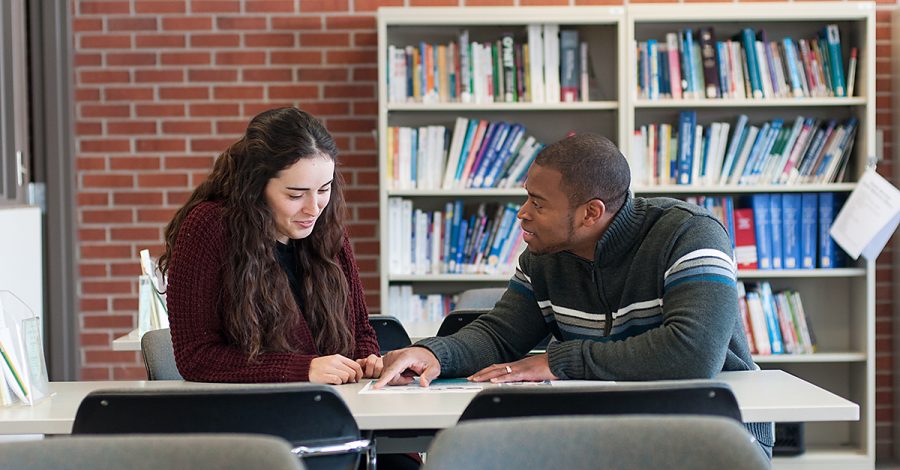Number of students seeking mental health resources spikes
Jan 30, 2020
College campuses across the nation have experienced a 30% to 40% increase on average in the amount of students using counseling services, reports Penn State University’s Center for Collegiate Mental Health. This increase can be observed on both a national scale and on John Carroll’s campus.
The Health and Wellness Center distributed a survey to all full-time, undergraduate students regarding their health. The results indicate that in the 2018-19 academic year, many students on campus reached out for help dealing with their mental struggles.
According to self-reported statistics regarding students who deal with anxiety, 6% of students were diagnosed but not treated, 9% said they were diagnosed and treated with medication, 5% were treated with psychotherapy and 7.5% were treated with both medication and psychotherapy. The results showed that in the last two weeks, 31% of respondents had experienced overwhelming anxiety.
According to self-reported statistics regarding students who deal with depression, almost 4% of students were diagnosed but not treated, 6.5% said they were diagnosed and treated with medication, 4% were treated with psychotherapy and 6.5% were treated with both medication and psychotherapy.
When students encounter mental health issues, such as the ones above, it may be overwhelming as to how to work through them. The Counseling Center is a free resource that is available to all John Carroll students, and one that Mark Onusko, its director, encourages students to take advantage of. There are various ways students can receive help from the Counseling Center, including one-on-one therapy, “Let’s Talk” sessions in the Center for Student Diversity and Inclusion every Tuesday from 2:30 to 4:30 p.m., psychology services on Wednesday afternoons, same-day emergency appointments and occasional group therapy sessions.
Onusko explained that therapy can be beneficial for a wide range of people. “There are a lot of common misperceptions as to who should and shouldn’t be in counseling.
“When you are performing every day below your baseline, and it is impacting your relationships, classes, sleep and eating patterns — those are all indications that you should seek support and intervention,” Onusko explained.
However, Onusko said that students who are functioning at their baseline or above can go to therapy, as well. “If there is any area [they want to improve] — communicating better in relationships or more effectively managing their anxiety, even if they do it pretty well overall — [they should attend therapy.] I feel like we are all works in progress,” Onusko stated. “There is no right or wrong, or too big or too small problem or concern to come use the Counseling Center.”
In the 2018-19 academic year, Onusko said that approximately 400 unique students visited the counseling center. This is a 55% increase from the previous five years.
Alumna Julia Ruggiero ‘19 discussed her experience with the Counseling Center. “I found the Counseling Center very helpful on Carroll’s campus. I went to a different therapist every year and learned a ton of unique techniques from all four of the people who worked with me.
“When I was at my low points, both sophomore year and senior year, I would talk with the therapist to sort through any anxious thoughts before making huge decisions. Over time, I finally felt more confident in caring for myself and to make my own decisions,” she said.
Mental health awareness has been recently emphasized on campus due to the Works in Progress campaign that began in fall 2018. Daniella Flores ‘21 is a member of the campaign, and said she joined in order to demonstrate that even student leaders who are very involved on campus can still struggle with mental health issues, such as social anxiety.
“I thought it was important to join the Works in Progress campaign because I know I hold various leadership positions on campus, and there is an assumption that those in leadership positions have it all together,” Flores said.
She continued, “I wanted to join to show that you can be involved and you can have a voice on this campus, even if you struggle with something that’s fighting against that. It’s important to show that those who are like me, who look like me, aren’t alone, that they are more than their struggle.”
There are ample opportunities for students to learn how to cope with mental health issues, according to Jamie Greenwolf, coordinator of student wellness. Whether through exercise, therapy or using a meditation app, students can take steps to improve their mental health.
An important aspect of cultivating a healthy mindset is striking a balance between the daily activities that deplete energy and those that can renew energy, Greenwolf explained. He said there are activities, such as studying for an exam, that take energy, and there are activities that renew and give energy.
“There are four main categories [for activities that give people energy]: Things that are good for your body, such as yoga or going on a walk. Things that are good for your mind, such as doing a puzzle or journaling. Things that are good for your heart, such as petting a dog or talking to a good friend. Things that are good for your spirit, such as religion or being out in nature — the idea of being connected to something bigger than yourself,” Greenwolf said.
Additionally, Onusko and Greenwolf encourage students who are interested in learning more about how to improve mental health to attend Fresh Check Day on Feb. 19 to discuss mental health with other students in a fun, engaging manner.













